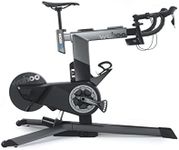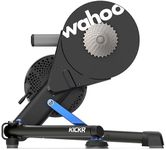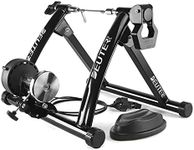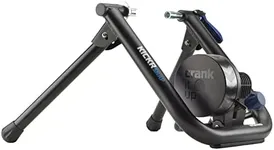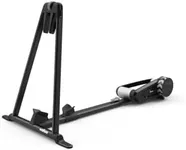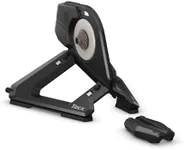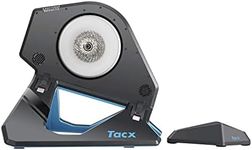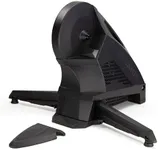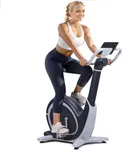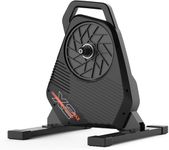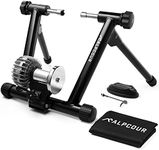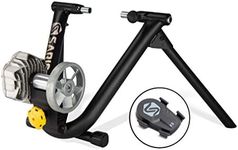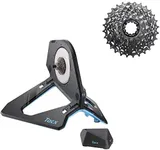Buying Guide for the Best Smart Bike Trainers
Choosing the right smart bike trainer can significantly enhance your indoor cycling experience. Smart bike trainers are designed to simulate outdoor riding conditions, track your performance, and integrate with various training apps. To find the best fit for you, it's essential to understand the key specifications and how they align with your cycling goals and preferences.Resistance TypeResistance type refers to how the trainer creates resistance to simulate different cycling conditions. The main types are magnetic, fluid, and direct drive. Magnetic trainers use magnets to create resistance and are generally quieter and more adjustable. Fluid trainers use a fluid chamber to provide a more realistic road feel but can be noisier. Direct drive trainers replace your rear wheel and offer the most accurate power measurement and road feel, making them ideal for serious cyclists. Choose based on your need for realism, noise level, and accuracy.
ConnectivityConnectivity is about how the trainer communicates with other devices and apps. Most smart trainers use Bluetooth and ANT+ to connect to cycling apps, heart rate monitors, and other sensors. Ensure the trainer you choose is compatible with your preferred training apps and devices. If you plan to use multiple apps or devices simultaneously, look for trainers with dual connectivity options.
Power AccuracyPower accuracy measures how precisely the trainer can measure your power output. This is crucial for tracking performance and progress. Trainers typically offer accuracy within a range of +/- 1% to +/- 5%. Higher accuracy is better for serious training and performance tracking. Casual riders might not need the highest accuracy, but competitive cyclists should opt for trainers with the most precise measurements.
Maximum ResistanceMaximum resistance indicates the highest level of resistance the trainer can provide, usually measured in watts. This is important for simulating steep climbs and intense workouts. Trainers with higher maximum resistance are better for advanced cyclists who want to push their limits. Beginners or those focusing on endurance rather than high-intensity training might not need the highest resistance levels.
Noise LevelNoise level refers to how loud the trainer is during use. This can be a significant factor if you live in an apartment or prefer to train early in the morning or late at night. Direct drive trainers are generally the quietest, followed by magnetic and fluid trainers. Consider your living situation and training environment when choosing a trainer based on noise level.
CompatibilityCompatibility involves ensuring the trainer fits your bike and works with your drivetrain. Check if the trainer supports your bike's wheel size, axle type, and cassette. Some trainers come with adapters for different bike types. Make sure the trainer you choose is compatible with your bike to avoid any setup issues.
Portability and StoragePortability and storage are about how easy it is to move and store the trainer. Some trainers are foldable and lightweight, making them easier to store in small spaces or transport. If you have limited space or plan to take your trainer to different locations, look for models that are designed for easy portability.

